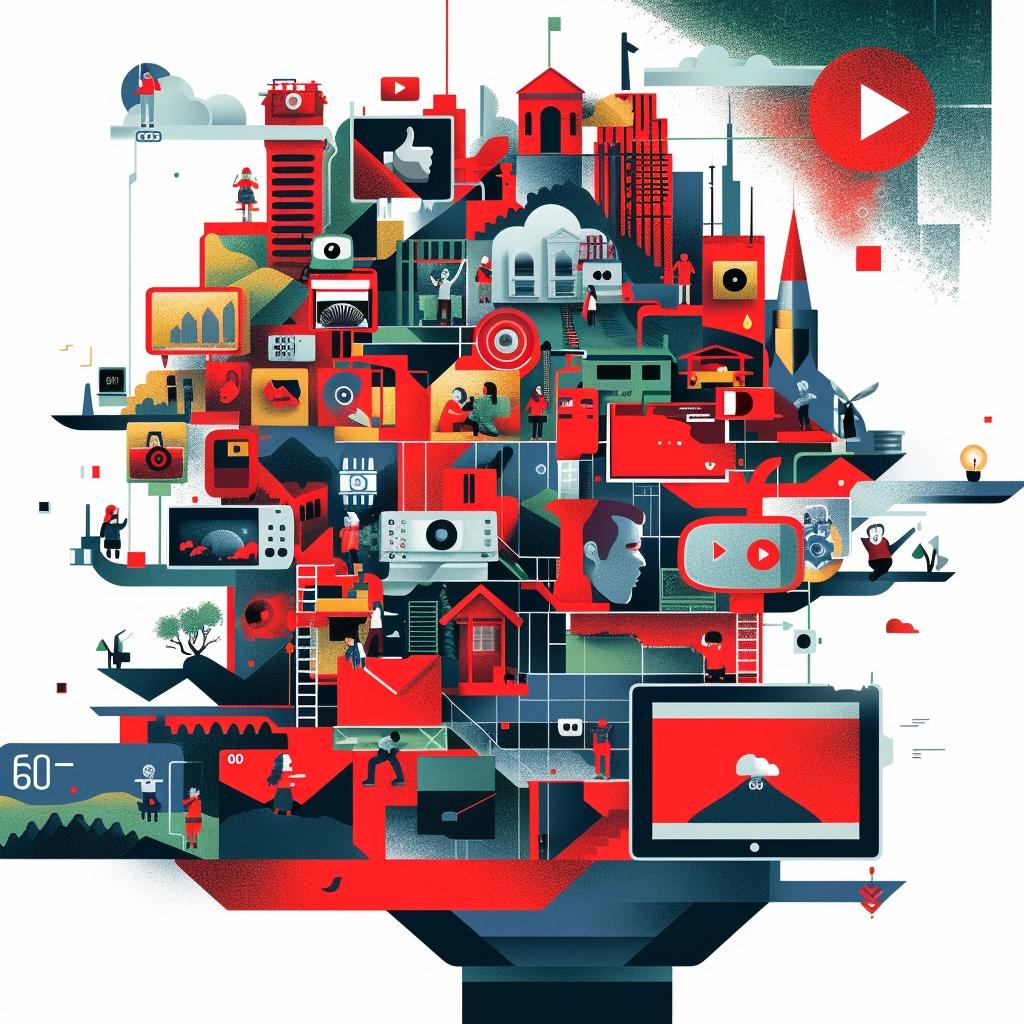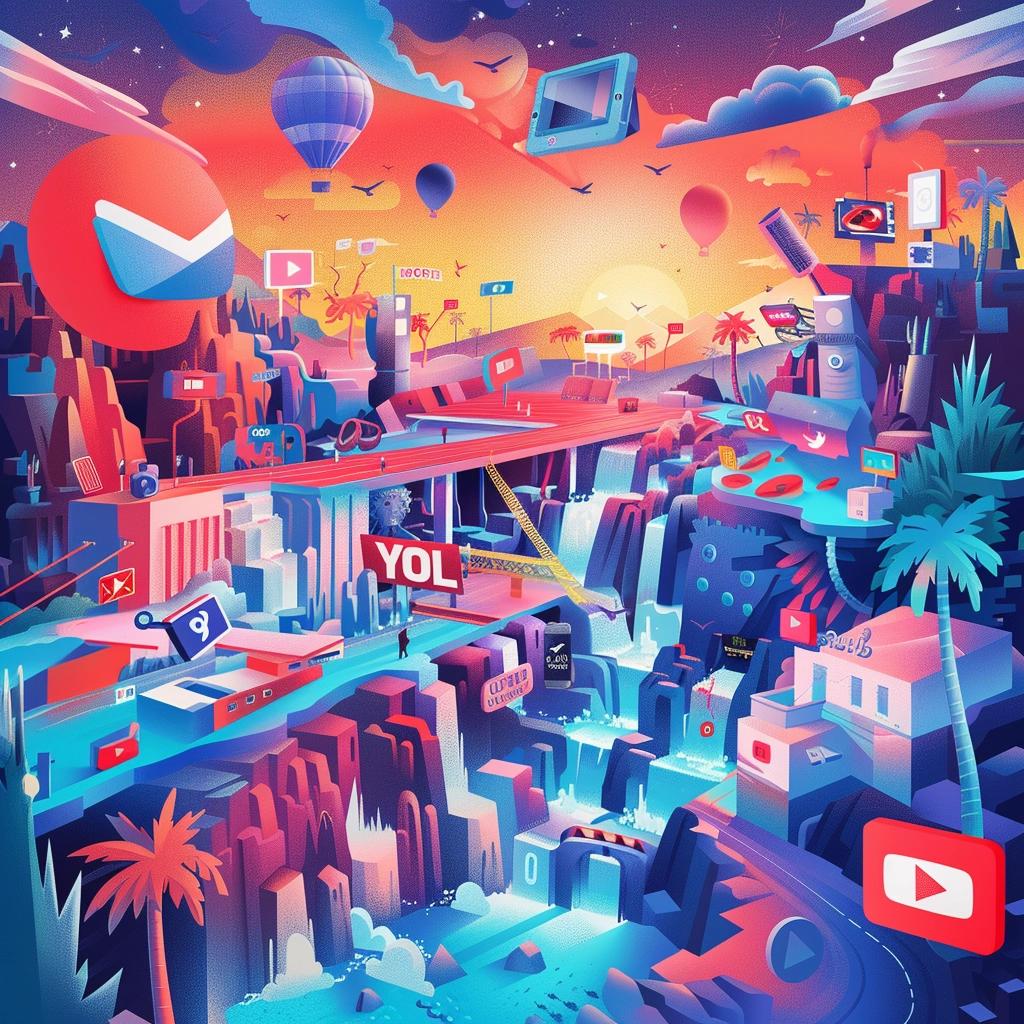YouTube has come a long way from its humble beginnings as a video-sharing platform! Today, it’s an absolute powerhouse, shaping the way we consume content and interact with creators on a global scale. Grab a snack, folks, because we’re about to dive into the captivating journey of YouTube’s evolution and its impact on society.
Key Takeaways
- YouTube started as a simple idea in 2005 but quickly grew into a global phenomenon, revolutionizing the way we consume and share video content.
- The platform enabled amateur creators to become internet celebrities, while also attracting professional content producers, leading to a diverse and ever-expanding content landscape.
- YouTube’s impact extends beyond entertainment; it has fostered the growth of influencer culture, the creator economy, and sparked debates around content moderation and copyright issues.
Origins of YouTube
The Idea and Founding

It all started in 2005 when three former PayPal employees – Chad Hurley, Steve Chen, and Jawed Karim – had a brilliant idea. They envisioned a platform where people could easily share and watch videos online, without the hassle of dealing with bulky email attachments or clunky software. Little did they know, their simple concept would revolutionize the way we consume and share content on the internet.
The First Video
On April 23, 2005, the first-ever video was uploaded to YouTube – a quirky 18-second clip titled “Me at the zoo.” The video, featuring co-founder Jawed Karim at the San Diego Zoo, might not seem like much today, but it marked the beginning of a new era in online video sharing. From that moment on, YouTube became a platform for ordinary people to share their lives, creativity, and perspectives with the world.
Rise to Prominence
Viral Videos and User Growth

As YouTube gained traction, viral videos began to emerge, capturing the attention of millions across the globe. Remember the “Charlie Bit My Finger” or “David After Dentist” videos? They were just a glimpse of the hilarious, heartwarming, and sometimes bizarre content that propelled YouTube’s popularity. The platform’s user base skyrocketed, and it quickly became a cultural phenomenon.
Google Acquisition

In 2006, tech giant Google recognized YouTube’s potential and acquired the platform for a staggering $1.65 billion. This move not only provided YouTube with the resources to expand and improve its infrastructure but also solidified its position as a major player in the online video space.
Expanding Content and Features
From Amateur to Professional Content
While YouTube initially gained popularity for its amateur content, it soon attracted professional creators, production companies, and even major corporations. High-quality, polished content began to populate the platform, catering to diverse interests and audiences. From educational channels to movie trailers, YouTube became a go-to destination for a wide range of video content.
Live Streaming and Virtual Events

YouTube didn’t stop there. It embraced the power of live streaming, allowing creators and organizations to connect with their audiences in real-time. From music concerts to gaming tournaments, YouTube became a hub for live events, further solidifying its position as a versatile platform for all things video.
YouTube’s Impact on Society
Influencer Culture and YouTubers as Celebrities
With the rise of YouTube, a new breed of celebrities emerged – the influencers. Ordinary people with extraordinary talent or charisma gained massive followings, turning their YouTube channels into powerful personal brands. These influencers not only entertained and inspired their audiences but also became trendsetters and opinion leaders, shaping everything from fashion to social movements.
Monetization and the Creator Economy
YouTube’s monetization model opened up a new world of earning opportunities for creators. Through advertising revenue, sponsorships, and merchandise sales, content creators could turn their passion into a full-time career. This gave rise to the “creator economy,” where individuals could build successful businesses by sharing their talents and connecting with audiences on YouTube.
Controversies and Challenges
Content Moderation and Misinformation
As YouTube’s influence grew, so did the challenges surrounding content moderation. With millions of videos uploaded daily, policing inappropriate, harmful, or misleading content became a daunting task. YouTube has faced criticism for its handling of misinformation, hate speech, and controversial content, sparking ongoing debates about free speech, censorship, and platform responsibility.
Copyright and Demonetization Issues
YouTube’s relationship with creators has also been strained by copyright and demonetization issues. Creators have expressed concerns about unfair or opaque policies that can result in strikes, demonetization, or even channel termination. These challenges have sparked discussions about the balance between protecting intellectual property rights and supporting content creators.
The Future of YouTube
Emerging Technologies and Trends
As technology continues to evolve, YouTube is poised to embrace new trends and innovations. Virtual reality, augmented reality, and 360-degree videos are already making their way onto the platform, offering immersive and interactive experiences for viewers. Additionally, advancements in artificial intelligence and machine learning could revolutionize content discovery, personalization, and even content creation on YouTube.
Competition and the Evolving Video Landscape
While YouTube remains the dominant force in online video, it faces increasing competition from other platforms and services. Social media giants like Facebook, Instagram, and TikTok have introduced their own video-sharing features, catering to specific audiences and content formats. The evolving video landscape will likely push YouTube to continually innovate and adapt to maintain its position as the go-to destination for video content.
YouTube’s journey from a simple idea to a global phenomenon is nothing short of remarkable. It has transformed the way we consume, create, and share video content, empowering individuals and shaping popular culture. While challenges and controversies persist, YouTube’s impact on society is undeniable, and its future holds endless possibilities as technology and trends continue to evolve.







